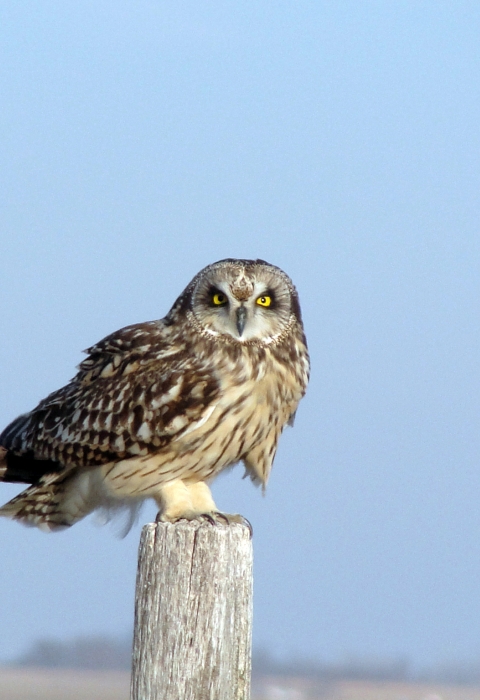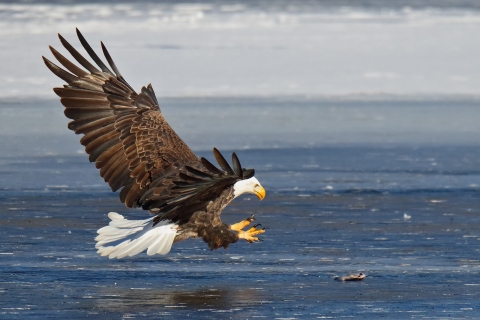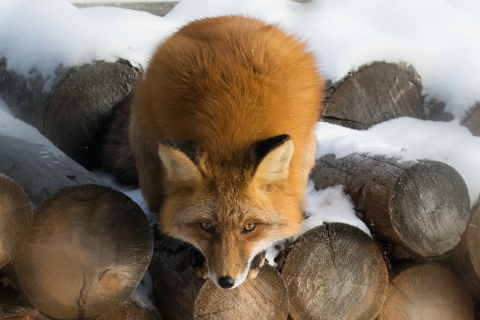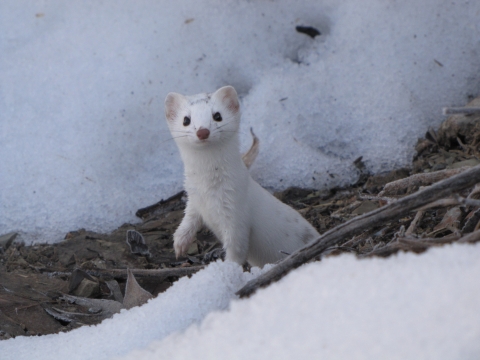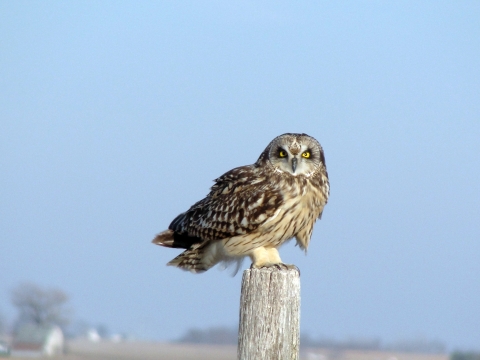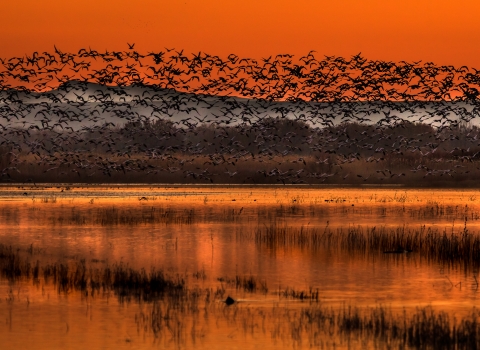Even during the coldest of winter days you can look for wildlife and not be disappointed. We at the U.S. Fish and Wildlife Service wanted to share some animals that are active no matter the weather. We encourage you to bundle up and head outside - you never know what you might see!
Bald eagles
The recovery of the bald eagle is an American success story and winter is one of the best times to see them in huge numbers. Back in 1940, when our national symbol was in danger of extinction throughout most of its range, Congress passed the Bald and Golden Eagle Protection Act. This added protection, along with several others actions which helped to clean America’s waterways, brought back these majestic birds. Across the country, you may see large groups of eagles along rivers near locks and dams. The breeding season also starts early for eagles. While timing varies regionally, it can start as early as November and December in southern areas. Eagles in the colder parts of the country typically begin nest building in January and may lay eggs as early as mid-February!
Red foxes
Red foxes are well adapted to cold and snow. In the colder parts of the country, they even grow longer, thicker coats to keep them insulated. These solitary omnivores don’t even need dens unless they are raising young in late winter. Instead, they sleep in the open and wrap up in their tails for warmth.
Foxes typically hunt in the early morning or late evening and have vertically oriented pupils that help them see in dim light. During the shorter days of winter, there’s a chance that you might see them quietly tracking prey through the woods and open prairie. With territories as large as 5 square miles and high energy needs, they are often on the move and catch mice, birds and other prey as they patrol. With their keen hearing and excellent sense of smell, a fox can hear a mouse squeak more than 100 feet away and will often dig in the snow to catch their prey!
Sparrows and winter songbirds
Have you been hearing birds calling lately? Even in areas with cold climates, there are plenty of bird species that stick around all year, so you’re not imagining things! There’s a good chance that you’ll hear the call of a white-throated sparrow. These small birds sing even in the coldest of months. You’ll also notice that bird activity at your backyard feeder or even in your local woods varies from year to year. This is normal and is partly linked to the abundance of food and the weather. Simply put, some species of overwintering birds only migrate farther south if food is limited in the northern part of the region.
If seed and fruit-bearing trees had excellent growing seasons, you’re likely to see lots of black-capped chickadees, northern cardinals and red-bellied woodpeckers. Weather and availability of food do change from year to year. Tracking this variability at your feeder can be fun! Winter feeder watching can be a great opportunity to help contribute to a better understanding of winter bird movements, as well as range shifts as a whole. Citizens of all skill levels across the country are sharing their sightings with Project FeederWatch, a program run by researchers at the Cornell Laboratory of Ornithology who track annual movements.
Winter weasels
So glad it snowed! Weasels, known as ermine in the winter months, change to mostly white to help blend in with snowy landscapes. Most weasels molt into their white winter coats in October or November. By March or April, they’ll molt back into their brown and white summer coats. These fearless hunters are true carnivores that prefer their prey to be fresh or alive when available, hunting mostly small animals like mice and voles. While they’re mostly active at night or in the twilight hours, you might see them tunneling under snow as they hunt. They save time and energy by repurposing other animal’s burrows and often use stumps, rocks or fallen trees as shelter.
Short-eared owls
Short-eared owls are widely distributed across almost all of North America. Watch for them in open prairies, meadows and woodlands. While they mostly eat mice and voles, they’ll even go after muskrats! In the summer, these owls are active at all hours. In the winter, they prefer low-light. Keep an eye out for them as they hunt by flying close to the ground. When they spot prey, these agile fliers dive and grab it with their talons.
During the winter months, these owls tend to congregate. If you’re lucky, you might see them by the dozens hunting at dusk and dawn or napping in tall grasses during the day. While all birds stay warm by trapping pockets of air around their bodies, the secret to maintaining these layers of air lies in having clean, dry and flexible feathers.
What will you find?
These are just a few of our favorite animals to spot in the winter. We hope we’ve inspired you to head outdoors to spot your own winter wildlife. If you’re looking for a new place to visit, consider visiting a national fish hatchery, national wildlife refuge national wildlife refuge
A national wildlife refuge is typically a contiguous area of land and water managed by the U.S. Fish and Wildlife Service for the conservation and, where appropriate, restoration of fish, wildlife and plant resources and their habitats for the benefit of present and future generations of Americans.
Learn more about national wildlife refuge or wetland management district wetland management district
A wetland management district is a U.S. Fish and Wildlife Service office that manages waterfowl production areas in one or more counties. Waterfowl production areas are small natural wetlands and grasslands that provide breeding, resting and nesting habitat for waterfowl, shorebirds, grassland birds and other wildlife. The Fish and Wildlife Service acquires waterfowl production areas under the authority of the Migratory Bird Hunting and Conservation Stamp Act, primarily using funds from the sale of Federal Duck Stamps. The Refuge System’s 38 wetland management districts comprise thousands of waterfowl production areas – almost all in the Prairie Pothole Region of the Northern Great Plains.
Learn more about wetland management district . Many of these lands offer hiking trails, loaner equipment like binoculars and snowshoes, interpretive talks and wildlife experts who can provide tips for seeing certain species.
